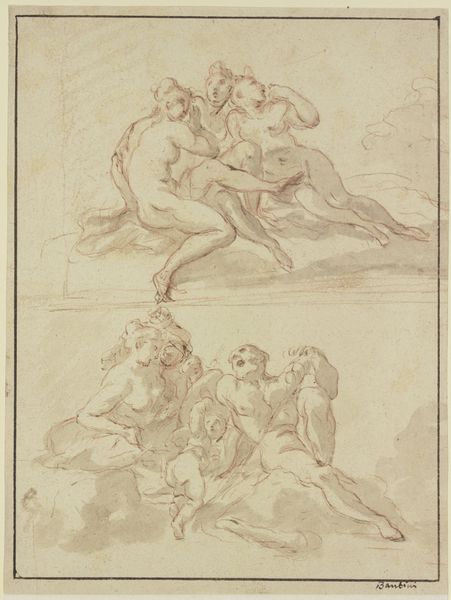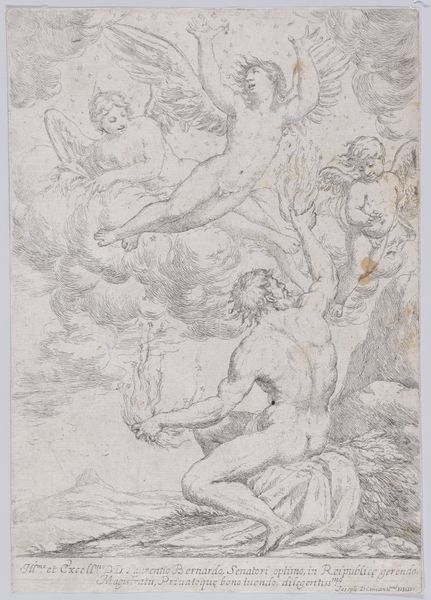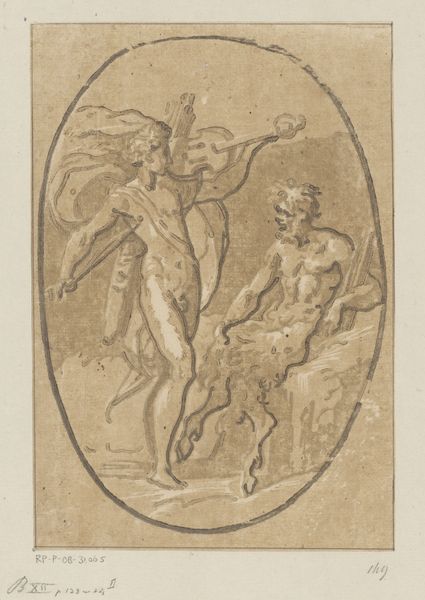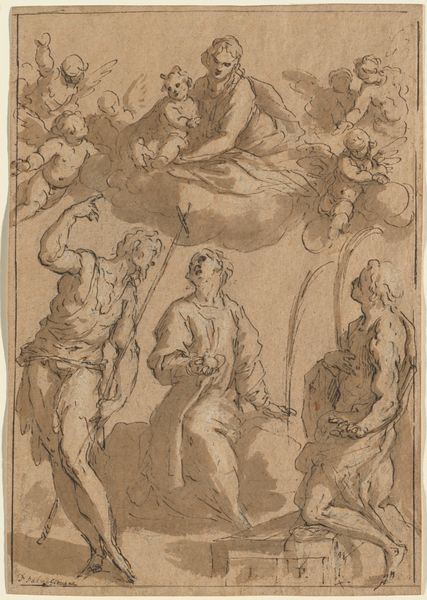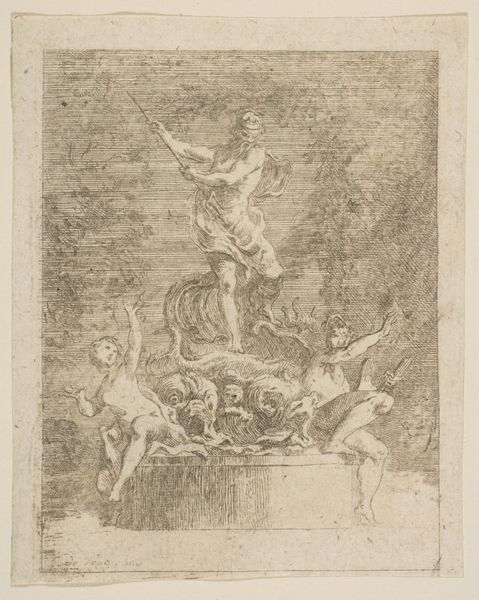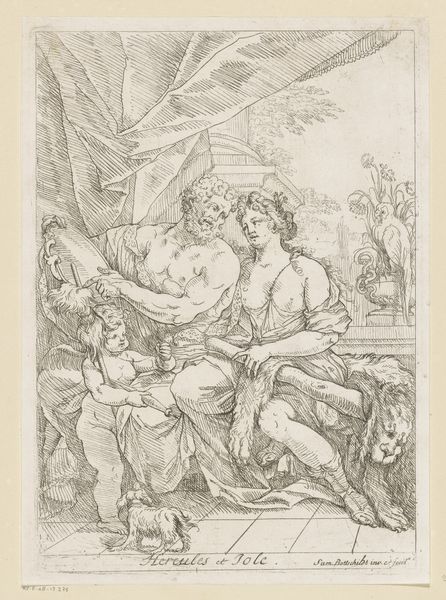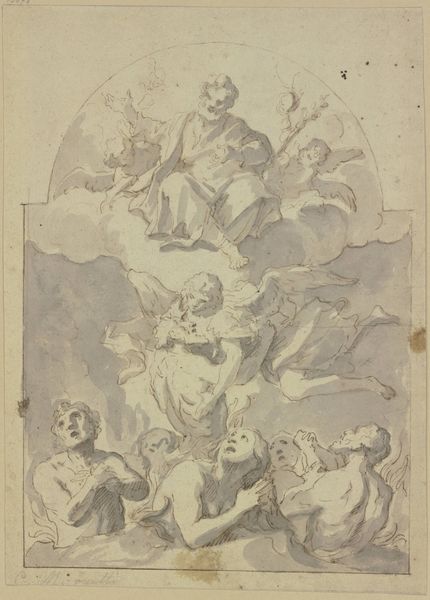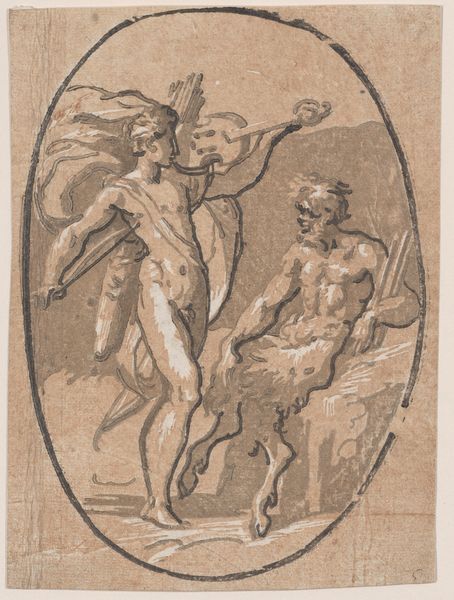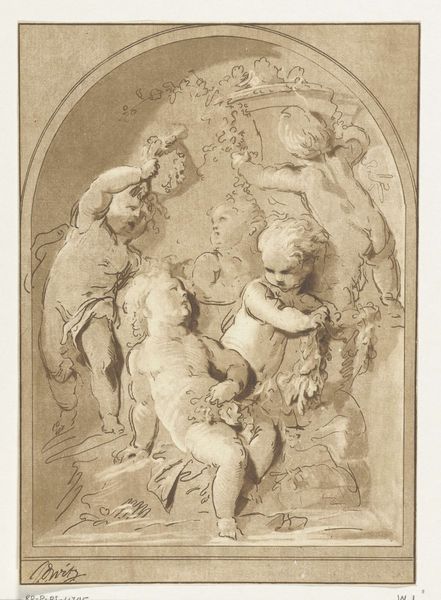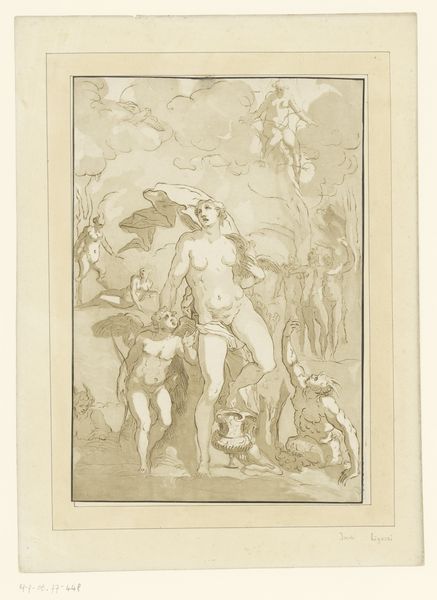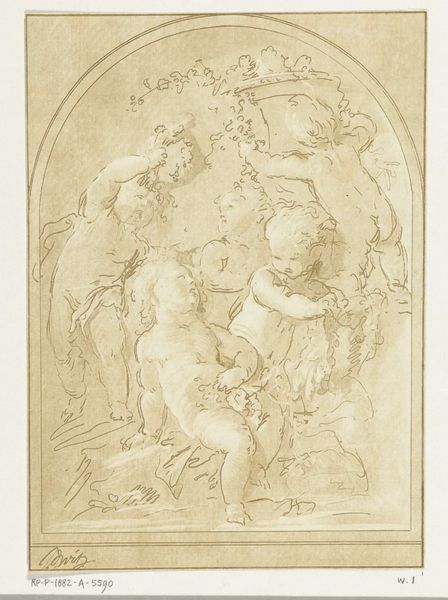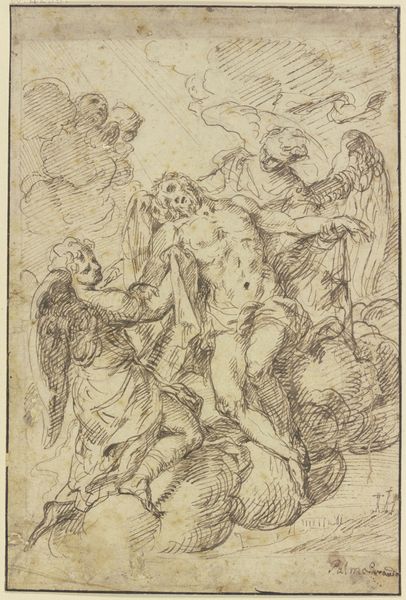
Allegorical Composition with Figures of Painting and Fame 1663 - 1716
0:00
0:00
drawing, print
#
drawing
#
allegory
#
baroque
# print
#
figuration
#
history-painting
Dimensions: 10 7/8 x 8 1/16in. (27.6 x 20.4cm)
Copyright: Public Domain
Curator: What a graceful sketch! It makes me think of preparatory drawings for grander works. Editor: Indeed. This drawing is attributed to Pietro Antonio de' Pietri and is titled, "Allegorical Composition with Figures of Painting and Fame." While the precise date of its creation isn't known, we can place it between 1663 and 1716. Curator: Immediately, the female figures draw me in. The figure of Painting seems almost…ethereal, reaching down towards Fame. Do you see any symbolism that catches your eye? Editor: Well, beyond the obvious allegory, consider the function of allegory in Pietri's time, used extensively to reinforce the power and prestige of patrons and institutions. Even a drawing like this plays a role in shaping the perception of artistic achievement. The drawing probably came to the museum because someone perceived the political undertones to have some historical and/or contemporary significance. Curator: Yes, I am not blind to its role in art history. What stands out for me, though, is the laurel wreath—held aloft above her head and floating upward as Fame and the painting figure reach up—it signifies triumph, immortality, the kind that great artworks attempt to achieve, not always in line with reality, of course, but…aspirational. Editor: You’ve zeroed in on the heart of it. And what about the putti—the chubby cherubs? One looks to be mimicking Painting with its own brush-like tools. Curator: Children can often be found within artworks as symbolic images that show inspiration being passed down generations of talent or an expression of love, so I agree with you, in this context, it symbolizes artistic instruction or lineage. It is hard to look at the composition in those terms, seeing as Pietri wasn’t really successful until after the period of this print. So maybe, lineage is more of a projection of legacy in this print than a true sentiment. Editor: The artwork prompts us to consider the historical frameworks that create and sustain artists. The institutional networks in Europe elevated a particular artist above another for financial incentives and cultural and political control. Curator: Precisely. I’m drawn to these Baroque allegories, how they attempt to weave narratives through symbols, to solidify cultural narratives…whether truthfully or not! Thank you for drawing attention to how our institutions shape art. Editor: Likewise, reflecting on these symbolic dimensions truly deepens our understanding.
Comments
No comments
Be the first to comment and join the conversation on the ultimate creative platform.
